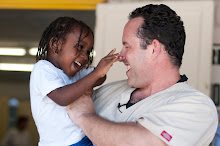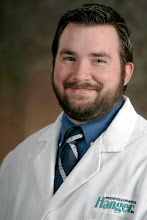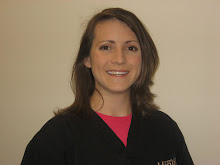Joint teaching time with physical therapy students:
The physical therapy students were covering the psycho-social aspect of being an amputee in Haiti and we were able to join their classes. We had a great discussion group with both classes and our patients in the Klinik. There was a lot of sharing during this session and the technicians, therapists and patients gained knowledge from this opportunity. They were also able to learn about prevention of Cholera as this is the Cholera “season”.
Casting:
I also taught them a new way to cast above-knee amputees. We outlined a casting and modifying course while using Mark, one of our volunteers, as the patient model. The four technicians gathered around, taking notes and asking pertinent questions throughout the whole demonstration. We modified the cast together and they fabricated the standard AK prosthesis, which we would use later during the alignment portion of the course.
After day three of this rotation, we started to pick up again as the buses poured in from Port-au-Prince, Leogane, and Gonâve. While all four of us stayed very busy casting, fitting and delivering bilateral and unilateral above-knee and below-knee prostheses, we still had some time in the afternoons to integrate more education into our mission here.
Anatomy and Physiology:
We took some time to discuss some anatomy and physiology as it pertains to the above-knee amputee. We went over some very basic boney landmarks of the pelvis so they can see how they relate to the fit and alignment of the AK socket. We emphasized problematic areas such as the ramus and distal/lateral femur. This helped reinforce why certain cast modifications were made and why certain boney landmarks (such as the trochanter) are critical to proper AK alignment. Again, they all took several notes and were not afraid to ask questions. The questions they asked indicated that the information was making a lot of sense to them.
Alignment:
Later in week two of this rotation we went over AK alignment and some typical gait deviations they have seen over this past year. We put together a chart that shows the classic schematic man exhibiting the most common deviations such as, lateral trunk bending, circumducted gait, abducted gait, knee instability, and medial/lateral whips. The chart lists some basic causes and possible solutions. We used Mark and the prosthesis they made for him to put the lesson plan into practice. Starting with a perfectly aligned prosthesis we changed one variable at a time. They were to identify the deviation, the cause, and then practically apply the solution. This section of the course provided the most discussion and feedback. They all got a chance to problem solve and associate the reasons why they have been intuitively making these adjustments over the past year. While this group of technicians are extremely mechanical, it was good to show them why a gait deviation is not always associated with alignment but rather, the fit of the socket as well.
Last year, in the early weeks of this relief effort, the focus was to provide as many quality limbs as possible. However, with that said, I am grateful to be a part of the instructional efforts here. Providing 20 to 30 limbs over a two-week rotational span is nothing when compared to teaching four very highly motivated and talented Haitians to provide for their own people. This cliché is unfortunately overused but no words describe our efforts better than, “Give a man a fish and he eats for a day. Teach a man to fish and he will eat for a lifetime.”






